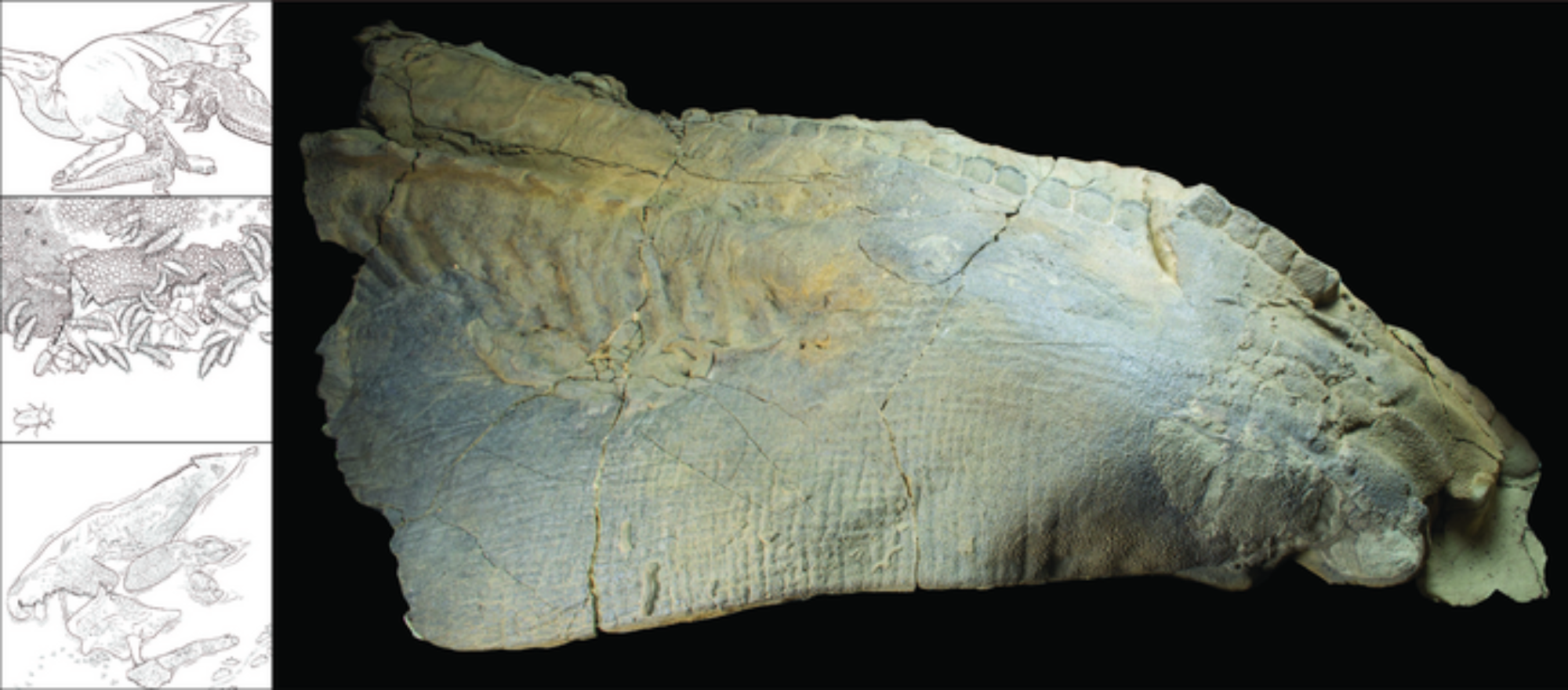

In case a tarantula nebula and a skeleton galaxy weren’t enough spookiness for one Halloween, scientists are learning more about dinosaur mummies. About 67 million years ago, a duck billed dinosaur called Edmontosaurus was going about its business in what is now North Dakota. The reptile died, but that wasn’t the end of Edmontosaurus’ troubles. A hungry ancient relative of the crocodile snuck in and started to munch on Edmontosaurus’ body, marking up its bones along the way. This hungry croc wasn’t good at destroying the evidence of its lunch, as the fossilized remains of Edmontosaurus’ skin contain well-preserved bite marks.
While this isn’t the fist dinosaur mummy to be discovered, they are a historically rare find. Typically, fossilized skin forms when the carcass of a dinosaur was protected from becoming a predator’s snack due to a quick burial and/or desiccation. Desiccation is when the moisture is sucked out of the skin of a living organism and deflated is when it shrinks down.
Dinosaur “mummies” have well preserved skin like those of this Edmontosaurus, but this specimen was different because of its crocodile wounds. The bite marks left behind from a posthumous but pre-mummy attack can help scientists uncover more about how this skin is so well preserved even after millions of years. In a new study published in the journal PLOS One, researchers looked at both fossil evidence and modern animal carcasses to propose a new explanation for how prehistoric dinosaur mummies might form. Based on this new explanation, the study suggests that there may even be more dino mummies out there just waiting to be found.
[Related: Feast your eyes on exquisite fossils from an ancient rainforest (and more).]
For the study, Stephanie Drumheller, a palentologist from the University of Tennessee, Knoxville, and colleagues looked at the Edmontosaurus fossil, aptly nicknamed “Dakota,” from the North Dakota Heritage Center and State Museum. Dakota was discovered in 1999 and excavated from the famed Hell Creek Formation, a geological formation shaped roughly 145 million to 66 million years ago near the end of the Cretaceous period and the start of the Paleogene period. Dakota had large patches of dry and seemingly deflated skin on its limbs and tail. The unhealed skin damage from its encounter with ancient crocodiles provides evidence that it became a mummy even though it wasn’t protected from scavengers.

Scavengers, like modern-day vultures, typically go after internal tissues and organs, which leaves behind the skin and bones. The bites to remove the organs helps gasses and liquids escape, helping the skin and bones dry out. The authors of study believe that skin damage from an incomplete scavenging would have exposed the dinosaurs insides, drying out the skin as the remains were buried.
[Related: This whale fossil could reveal evidence of a 15-million-year-old megalodon attack.]
“Not only has Dakota taught us that durable soft tissues like skin can be preserved on partially scavenged carcasses, but these soft tissues can also provide a unique source of information about the other animals that interacted with a carcass after death,” Clint Boyd, senior paleontologist at the North Dakota Geological Survey, said in a press release.
Desiccation and deflation is common with present day carcasses and explains how dinosaur mummies might actually be able to form. But just as every living being is a little different, every death is a little different—and the team suggests that there are possibly many ways for a dinosaurs to become a mummy. Understanding how dino mummification works will guide how paleontologists carefully collect and interpret the remains of even more varieties of long-lost creatures.
